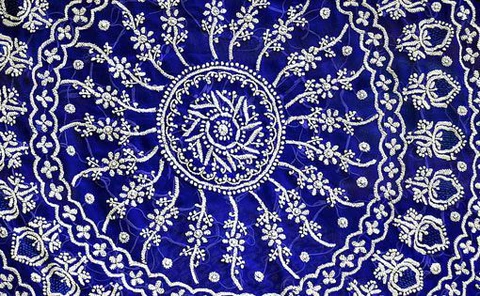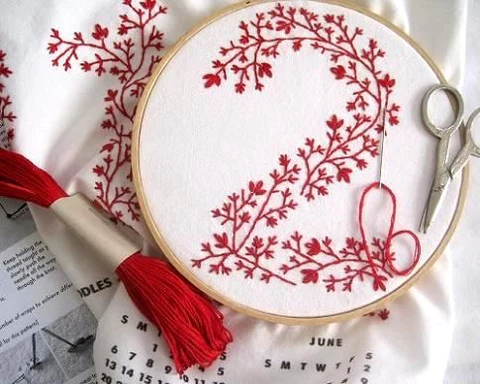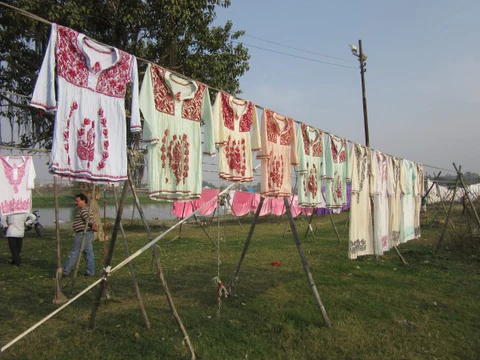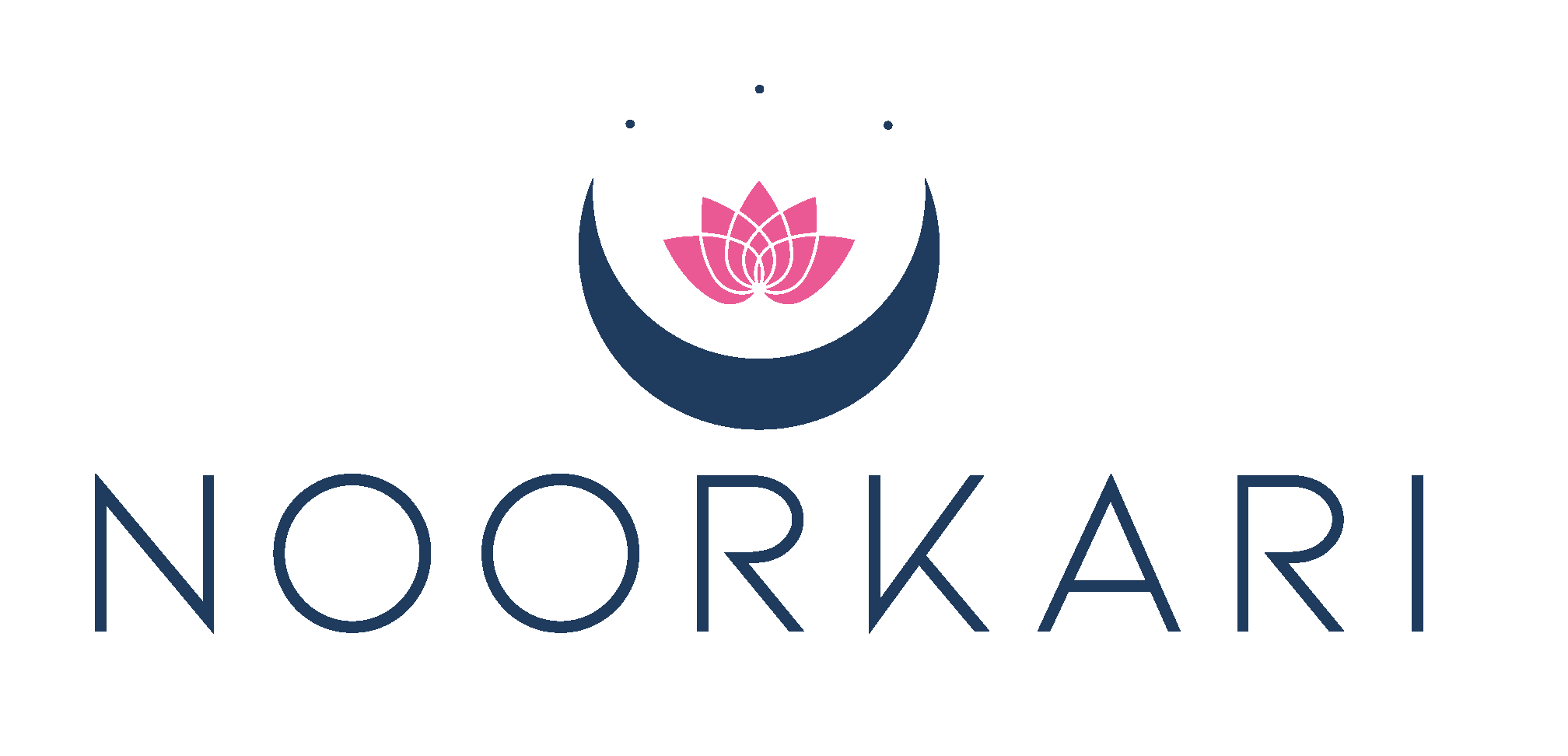Steps Of Chikankari
Chikan which literally means embroidery is known to have been introduced by Nur Jehan, the wife of Mughal emperor Jahangir. Lucknow is the heart of the chikankari industry today. Chikankari is delicate and is artfully done on a variety of textile fabric like muslin, silk, chiffon, organza, net, etc. The fabric cannot be too thick or hard, else the embroidery needle won’t pierce it. White thread is embroidered on cool, pastel shades of light muslin and cotton garments. Nowadays coloured and silk threads are also being used to do this embroidery.

There are three main steps in the completion of the Chikankari on the fabric.
Block Printing – The initial phase where the design is made on the cloth of choice. The cloth is cut according to the garment it will form and using multiple wooden block stamps, designs are imprinted in blue ink on to the fabric.There will be different blocks for butis, floral patterns and borders. In Lucknow, the printing process is done by separate group of artisans who mainly concentrate in printing. The printed fabric is now ready for the embroidery work.

Embroidery work: The embroidery is done over the printed design pattern using needle and thread. The artisan creates traditional patterns using different techniques. Different types of stitches can be made in one product.

Washing – Once the embroidery work is complete, the fabric is soaked in water to remove the pattern outlines.Then washing and finishing which takes around 10 days. This process involves bleaching, acid treatment, stiffening and ironing.After this it is starched to obtain the right stiffness depending on the fabric.









